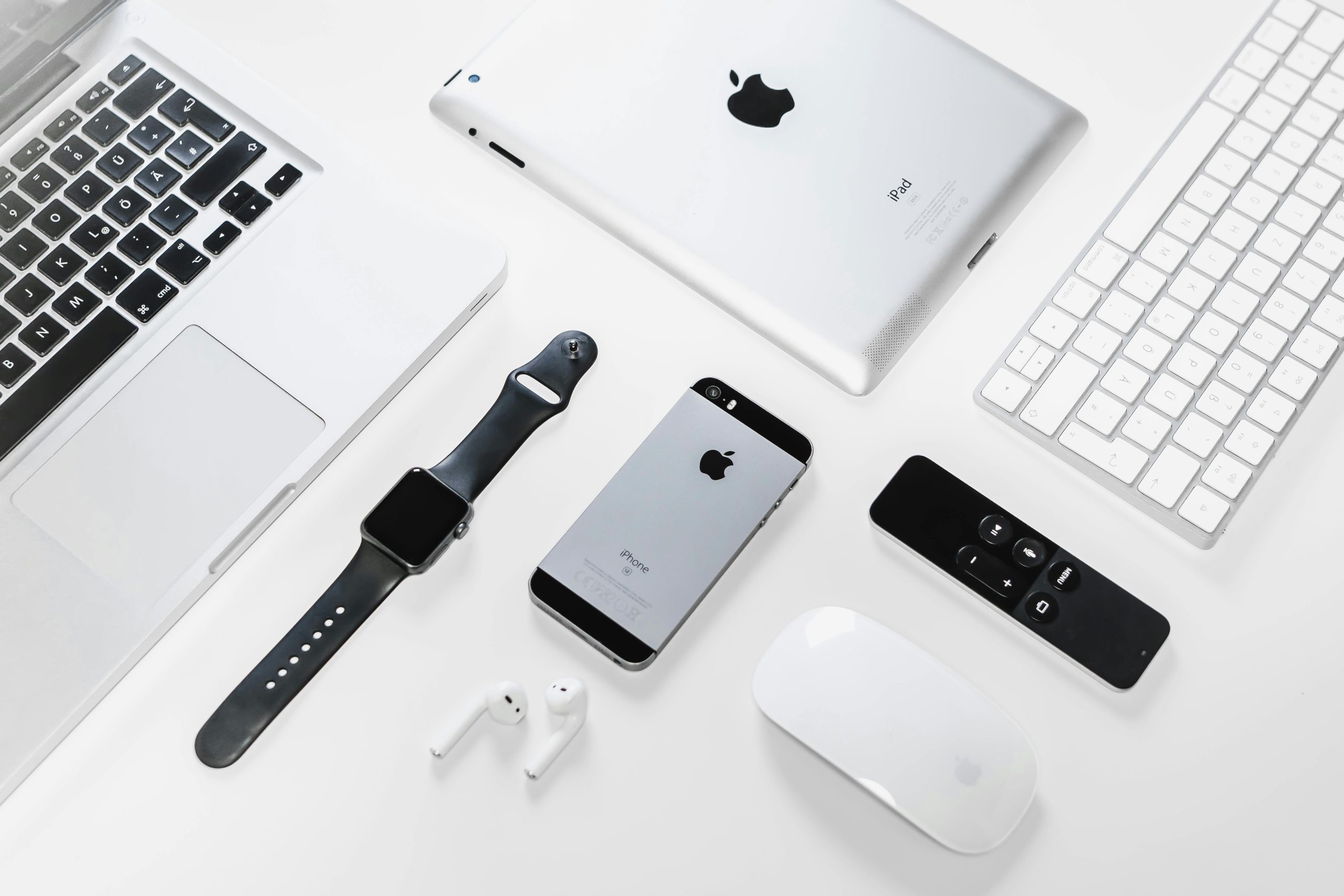How to Take a Screenshot on a Mac: A Comprehensive Guide

Capturing your Mac’s screen is a fundamental skill for a variety of tasks, from documenting software issues to sharing creative work or simply saving a memorable moment. macOS offers several built-in methods for taking screenshots, catering to different needs and preferences. This guide will walk you through each option, ensuring you can efficiently capture exactly what you need on your Apple computer.
Understanding Screenshot Options on macOS
macOS provides a versatile set of tools for screen capture, accessible through keyboard shortcuts and a dedicated screenshot utility. These tools allow you to capture the entire screen, a specific window, or a selected portion of your display. Understanding these options is key to maximizing your productivity.
The Built-in Screenshot Utility: Command + Shift + 5
Introduced in macOS Mojave, the Command + Shift + 5 shortcut brings up a comprehensive on-screen control panel for taking screenshots and screen recordings. This is arguably the most user-friendly and versatile method for most users.
Accessing the Screenshot Utility
To open the screenshot utility, simply press the following keys simultaneously: Command + Shift + 5.
Navigating the Control Panel
Once activated, a toolbar will appear at the bottom of your screen, offering several options:
- Capture Entire Screen: This icon, typically a rectangle with a dotted outline, allows you to capture your entire desktop.
- Capture Selected Window: Represented by a window icon, this option lets you click on a specific application window to capture it.
- Capture Selected Portion: This icon, resembling a dashed rectangle, enables you to drag a selection box around the specific area of the screen you wish to capture.
- Record Entire Screen: This option allows you to record your entire screen as a video.
- Record Selected Portion: Similar to capturing a selected portion, this lets you record a specific area of your screen as a video.
Screenshot Options and Settings
To the right of the capture modes, you’ll find an “Options” menu. This menu provides further customization:
- Save to: Choose where your screenshots will be saved (Desktop, Documents, Clipboard, Mail, Messages, Preview, or Other Location). By default, screenshots are saved to the Desktop.
- Timer: Set a delay (5 or 10 seconds) before the screenshot is taken. This is useful for capturing menus or elements that disappear when you press a key combination.
- Show Floating Thumbnail: When enabled, a small thumbnail of your screenshot appears in the corner of the screen for a few seconds, allowing you to quickly click it to open it in Preview for editing or sharing.
- Remember Last Selection: This option remembers the area you last selected for a custom portion screenshot.
Taking the Screenshot
After selecting your desired capture mode and adjusting options, click the “Capture” button or press the Return key. If you chose to record, click “Record.”
Classic Keyboard Shortcuts for Screenshots
For quicker access without the on-screen utility, macOS offers several traditional keyboard shortcuts:
Capture the Entire Screen
To capture your entire screen and save it as a file on your Desktop:
Press Command + Shift + 3.
The screenshot will be saved as a PNG file with a timestamp in its name.
Capture a Portion of the Screen
To capture a selected portion of your screen:
- Press Command + Shift + 4.
- Your cursor will change into a crosshair.
- Click and drag to select the area you want to capture.
- Release the mouse button to take the screenshot.
The selected portion will be saved as a PNG file on your Desktop.
Capture a Specific Window or Menu
To capture a specific window, menu, or the Dock:
- Press Command + Shift + 4, then press the Spacebar.
- Your cursor will change into a camera icon.
- Hover over the window or menu you want to capture; it will be highlighted.
- Click the mouse button to take the screenshot.
This method captures the selected item with a subtle shadow, which can be removed by holding down the Option key while clicking.
Saving Screenshots to the Clipboard
Instead of saving screenshots directly to your Desktop, you can copy them to your clipboard for immediate pasting into documents, emails, or other applications. To do this, simply add the Control key to the keyboard shortcuts:
- Entire Screen to Clipboard: Command + Control + Shift + 3
- Selected Portion to Clipboard: Command + Control + Shift + 4
Once copied to the clipboard, you can paste the screenshot into any application that supports image pasting by pressing Command + V.
Customizing Screenshot Save Locations and Formats
While the default save location is the Desktop and the default format is PNG, you can change these settings using the Terminal application.
Changing the Default Save Location
To change where your screenshots are saved:
- Open the Terminal application (you can find it in Applications > Utilities or by searching with Spotlight).
- Type the following command and press Return:
defaults write com.apple.screencapture location - After typing
location, drag the folder where you want your screenshots to be saved directly into the Terminal window. This will automatically fill in the correct path. - Press Return again.
- To ensure the changes take effect, restart the SystemUIServer process by typing:
killall SystemUIServer - Press Return.
Changing the Screenshot File Format
To change the file format (e.g., from PNG to JPG):
- Open the Terminal application.
- Type the following command, replacing
jpgwith your desired format (e.g.,tiff,gif,pdf):
defaults write com.apple.screencapture type jpg - Press Return.
- Restart the SystemUIServer process:
killall SystemUIServer - Press Return.
Editing and Annotating Screenshots
Once a screenshot is taken, macOS offers basic editing capabilities through the Preview application, which opens automatically if you have the “Show Floating Thumbnail” option enabled or if you double-click a saved screenshot file.
Using Preview for Basic Editing
In Preview, you can:
- Crop: Select the area you want to keep and go to Tools > Crop.
- Annotate: Use the Markup Toolbar (click the pen icon) to add text, shapes, arrows, highlights, and signatures.
- Resize: Go to Tools > Adjust Size to change the dimensions.
- Export: Save the screenshot in a different format or with a different quality setting.
Advanced Annotation Tools
For more advanced annotation features, such as blurring sensitive information or adding more complex graphics, third-party applications like Skitch, Snagit, or CleanShot X are popular choices among Mac users.
Recent Developments and Best Practices (2024-2025)
As of 2024 and into 2025, the core screenshot functionality in macOS remains robust and largely unchanged, with the Command + Shift + 5 utility continuing to be the most comprehensive tool. Apple’s focus has been on refining the user experience and integrating screenshot capabilities seamlessly with other macOS features.
Integration with iCloud and Handoff
Screenshots saved to the clipboard can be easily transferred between Apple devices using Universal Clipboard, provided Handoff is enabled in your System Settings and both devices are signed into the same Apple ID. This allows for a fluid workflow across your Mac, iPhone, and iPad.
Accessibility Features
macOS continues to enhance its accessibility features. Users can adjust pointer speed, enable keyboard navigation for screenshot tools, and utilize VoiceOver for screen reading, making screenshot capture accessible to a wider range of users.
Performance and File Size
While PNG is the default format for its lossless quality, it can result in larger file sizes. For web use or when file size is a concern, converting to JPG or WebP (using third-party tools) can be beneficial. The efficiency of these conversions is an ongoing area of development in image compression technologies.
Security Considerations
When capturing sensitive information, always be mindful of what is displayed on your screen. Utilize the “Capture Selected Window” or “Capture Selected Portion” options, and consider using the “Show Floating Thumbnail” feature to review your screenshot before it’s finalized. For highly sensitive data, consider using dedicated secure screenshot tools or blurring sensitive areas in Preview or other editing software.
Troubleshooting Common Screenshot Issues
While generally reliable, users might occasionally encounter issues with taking screenshots:
- Keyboard Shortcuts Not Working: Ensure no other application is overriding these shortcuts. Restarting your Mac can often resolve temporary glitches. Check System Settings > Keyboard > Keyboard Shortcuts to ensure they are enabled and not conflicting.
- Screenshots Not Saving: Verify that you have sufficient disk space and that the save location has the correct permissions. Restarting the SystemUIServer process (as described in the Terminal section) can also help.
- Floating Thumbnail Not Appearing: This is controlled within the Command + Shift + 5 utility’s Options menu. Ensure it’s enabled.
Conclusion
Mastering the art of taking screenshots on a Mac is a simple yet powerful way to enhance your digital workflow. Whether you prefer the all-in-one control of Command + Shift + 5, the speed of classic keyboard shortcuts, or the flexibility of saving to the clipboard, macOS provides the tools you need. By understanding these methods and their customization options, you can efficiently capture, share, and annotate your screen content with ease.










